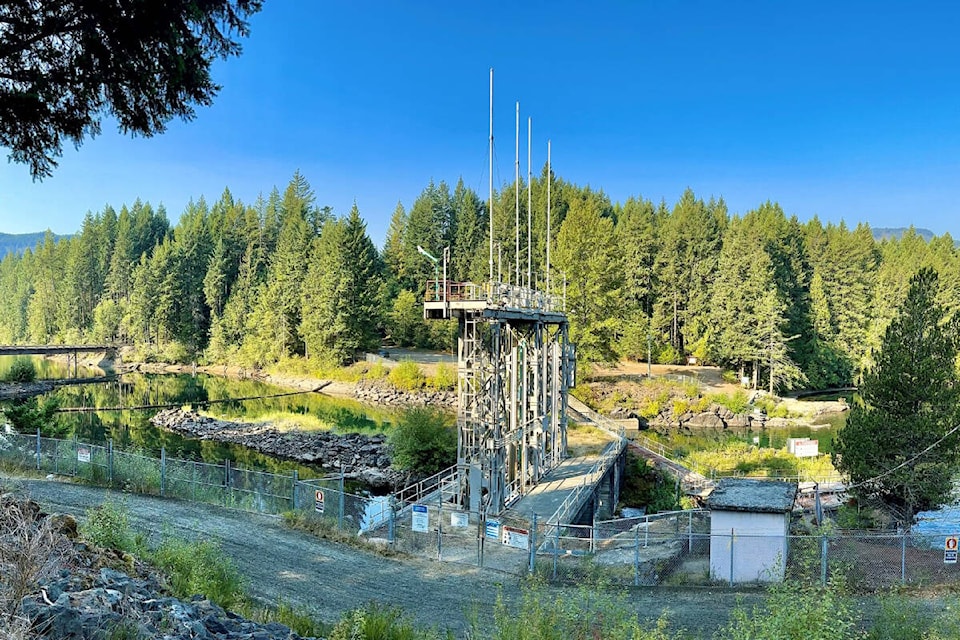Due to the very low water inflows into the watershed and the current water storage within the Comox Lake Reservoir, and the ongoing drought conditions, BC Hydro has further reduced the river flow rate. This is being done to conserve water should the dry conditions continue into November.
“Water inflows into the Comox Lake Reservoir are around 2-3 cubic metres per second (m3/s),” explained spokesperson Stephen Watson. “Since early July we’ve been providing about 11-12 m3/s down the Puntledge River. This summer has been very dry. August had the lowest water inflows on record for that month. Our records go back 60 years.”
The Comox Lake Reservoir has been slowly drafting over the summer and is currently at 133.1 metres. The reservoir generally fluctuates between 131 and 135.3 metres above sea level. When the reservoir moves below 131 metres, as it briefly did last fall, the amount of water that can be released from the Comox Dam becomes naturally restricted.
That’s because the dam is about 300 metres downstream of the lake outlet.
“If we do not reduce flows and hold it at the current rate there’s the potential of reaching 131 metres around the end of October,” said Watson. “By taking action now to reduce flows the level may be around the 132 metres by that time. It gives us about one metre of extra storage.”
On Sunday night into Monday morning BC Hydro reduced flows down the Puntledge River to about 8-8.5 m3/s.
The flows will be held at that rate until the fall rains and “hopefully move upward sooner than later.”
The downstream Browns River and Tsolum River are both only flowing at about 0.1-0.2 m3/s.
“We have been working with government fish agencies over the summer about considerations for fish, as well as with the Comox Valley Regional District about considerations for domestic water supply,” said Watson. “Those discussions will continue as needed into the fall.”



